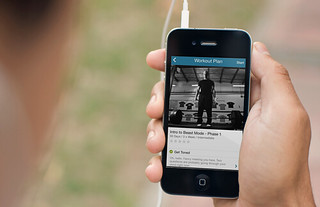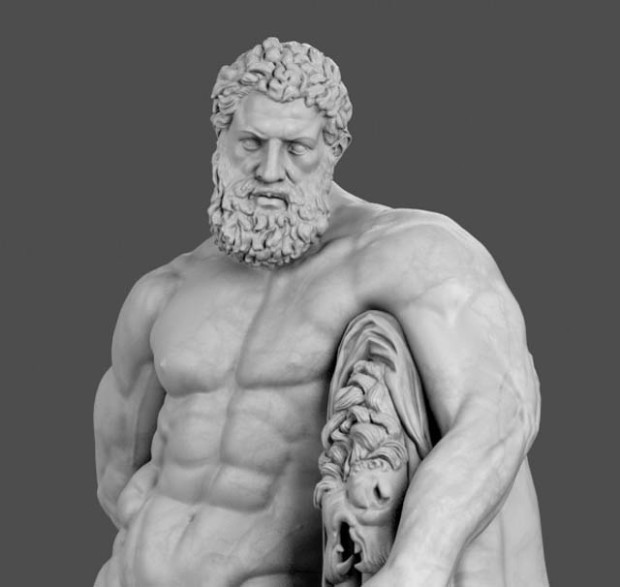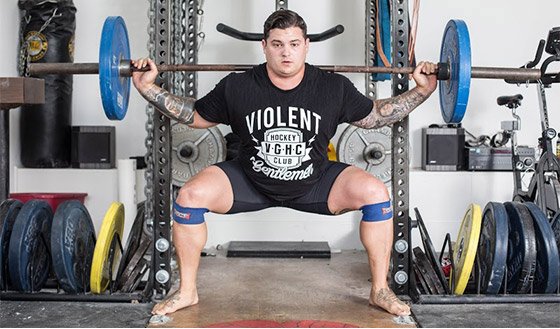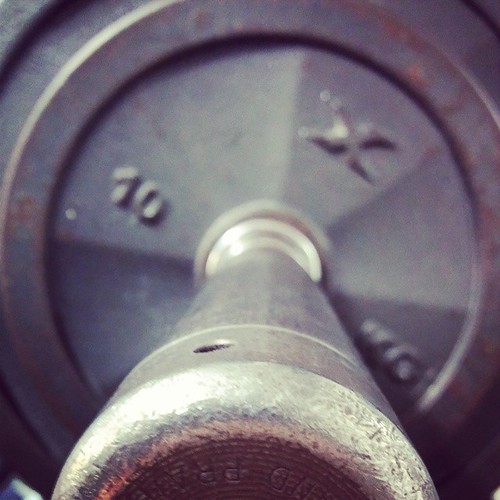I know Dan John has relentlessly sung their praises. And, after listening to him speak last weekend, I know Gray Cook is a big fan of them too.
What am I referring to? CrossFit? ShakeWeights? One Direction? Bacon wrapped figs?
None of the above.
Besides, everyone knows that Dan is an N’Sync‘er for life. And urban legend suggests the inspiration behind Gray Cook developing the FMS is from him watching Backstreet Boys videos and being in awe of their movement quality.
Clearly none of that is close to being true.
And now that I’ve opened myself up to a libel civil case, lets push all that under the rug and get to what I’m actually referring to (not that the title didn’t give it away or anything).
Farmer Carries
Dan John loves carries. Just last weekend Gray Cook named them his #1 most functional exercise. And while I’m not close to being at the same level as those two – I’m still eating at the proverbial “little kids table” with regards to my place on the fitness authority totem pole – I too am a huge fan, and feel they’re one of the most underrated and least utilized exercises out there.
I’m a huge advocate of carries as I feel they offer a gulf of benefits. Everything from grip strength to improved hip stability to increased core strength to helping to build a yoked up upper back.
Breaking things down further:
– When performed unilaterally, they’re a fantastic way to train core stability – specifically anti-lateral flexion. But even when performed bilaterally, they’re still an awesome “core” exercise.
– As noted above, they obviously help improve grip strength. Taking it a step further, though, they do an amazing job of “activating” the rotator cuff through a process called irradiation.
In non-geek speak, all this means is that when you squeeze something with a death grip, the rotator cuff turns on, and as a result the shoulder “packs” itself. In a sense, carry variations are a great exercise for those with chronic shoulder issues.
The only caveat would be for those with a depressed shoulder girdle or who present with downwardly rotated scapulae (or, more specifically, those who are symptomatic and have shoulder pain along with the aforementioned criteria). In this scenario, loaded carries may not be a good fit.
– Farmer carries do an amazing job at challenging hip stability – especially when performed unilaterally (one arm at a time).
– They condition the shit out of you. The next time someone asks you whether or not weight training has any cardiovascular benefit, have him or her do a few rounds of carries for 50-75 yds. And then laugh at them.
– And lets just state the obvious: they do a superb job of increasing one’s overall sense of badassessey.
How to Program Carries
I received an email from a reader the other day asking how I go about programming carries into people’s programs and figured it was something that could benefit more people if I answered it here.
1. How should one program loaded carries into training? I.e., should it be in an upper body day or lower body? I tend to do farmers walk on lower body days while I do goblet or racked carries on upper body days.
As always, the answer is…….it depends.
Carries can be used for so many different things. I’ve used them with people suffering from low-back pain; I’ve used them as a conditioning tool; I’ve used them as part of a strength pairing (one of my favs is pairing heavy bench press with carries); I’ve used them as a stand alone “thing” on off-days.
Much of it depends on someone’s goals. If they’re a Strongman competitor for example, carries could very well be a “main movement” on a given day and will be prioritized accordingly.
Conversely, for the more mortal of us, I like to use carries towards the tail-end of a training session as either a C1-C2 circuit (think: carries paired with Goblet Reverse Lunges. It’s important to think about grip being a limiting factor when pairing exercises with carries. Goblet variations don’t require as much grip), or maybe as a finisher where I want to, you know, “finish” someone.
Try this:
A1. 1-Arm KB Carry – Right Side (30 yds)
A2. KB Swing x 15
B1. 1-Arm KB Carry – Left Side (30 yds)
B2. KB Goblet Squat x 10
*** Perform in circuit fashion and rest for 60-90s at the end. Perform 3-5 rounds depending on how much you want to hate life that day.
I think the approach you laid out above is spot on. If I had to choose, I’d place loaded (heavy) carries on lower body days, and maybe some low-level/low-intensity racked or Goblet carries on upper body days as part of an extended warm-up or towards the end of the training session.
Another option to consider, and something that some of us coaches at CSP do on occasion, is to have a dedicated “carry day.” We’ll pick a day of the week after work and just work up to a set TOTAL DISTANCE we want to hit.
Week 1: 160 lbs (per side) x 20 yds per trip. Work up to 80 yds
Week 2: 160 lbs (per side) x 20 yds per trip. Work up to 100 yds
Week 3: 200 lbs (per side) x 20 yds per trip. Work up to 80 yds
Week 4: 220 lbs (per side) x 20 yds per trip. Work up to 100 yds
NOTE: I wouldn’t do something this aggressive the day before a significant lower body session.
The weight selection can obviously be tweaked to fit one’s ability, and in between sets we can add in fillers like wall hip flexor mobilizations, band pull-aparts, reverse crunches, deadbugs, or any other low-grade activation/mobility drill that 1) won’t impede performance on the subsequent sets of carries and more importantly 2) helps address and fix shit.
2. Is there a specific weight/timing/distance on how long to walk for different objectives? If I want to be strong, what kind of weight should I be looking to use and what distance or timing should I be looking at?
And if I want muscle gainzzz, I suppose that would require more TUT and so, what should I be looking for again?
In terms of weight, I feel most people, most of the time tend to be overzealous with their weight selection.
This isn’t to say that every set has to look pristine – heavy carries are heavy, and it won’t look fantastic 100% of the time. However, I do feel there’s a cost/benefit of going too heavy, which I address in THIS post.
Technique does matter here.
If someone is performing carries with an excessive forward head posture and/or excessively leaning to one side or the other (or rounding their back), are they really gaining any benefit other than bragging rights and a few high fives?
If strength is the goal is you need to make sure you’re progressing in some fashion, whether it’s actively increasing the weight used each week, the distance travelled, or both. See circuit I described above.
I think a bit of variety comes into play here. I LOVE offset (1-arm) carries. I also like Crossbody carries (assuming one has ample shoulder flexion to do so safely).
And if you REALLY wan to get crazy and inventive, you can do something like this:
So yeah, staying cognizant of factors such as how much weight you’re using, distance travelled, Time Under Tension (TUT)……aim for a total amount of time under tension (say, 3-5 minutes), and even adding in a little variety all enter the conversation.
There’s no right or wrong approach.
3. I always wanted to ask: why 40 yards? I realise unlike normal exercises with sets/reps panned out, loaded carries are more unconventional and I can’t seem to find more info on how to program them to meet specific objectives. I’m hoping you could help me address this issue.
I think we tend to gravitate towards 40 yds as our marker at the facility because we have 40 yds worth of turf we can utilize. Understandably, not everyone has access to that much space in their gym. Using smaller increments is fine.
Some distance coaching clients of mine have super limited space – I’m talking 10-15 ft, or the equivalent of their living room – and I’ll have them perform toe-to-toe carries where they literally walk toe-to-toe across the floor. It’s harder than it sounds.
Nevertheless, I hope I was able to shed some light on how I go about programming loaded carries into the mix. There are a million and one different ways to go about it. What I described above are just a handful of my “go to” strategies.
Cause I want it thaaaaaaaat way……..









 programs designed for building maximum strength but Block Periodization is the one they believe in and utilize themselves.
programs designed for building maximum strength but Block Periodization is the one they believe in and utilize themselves.




